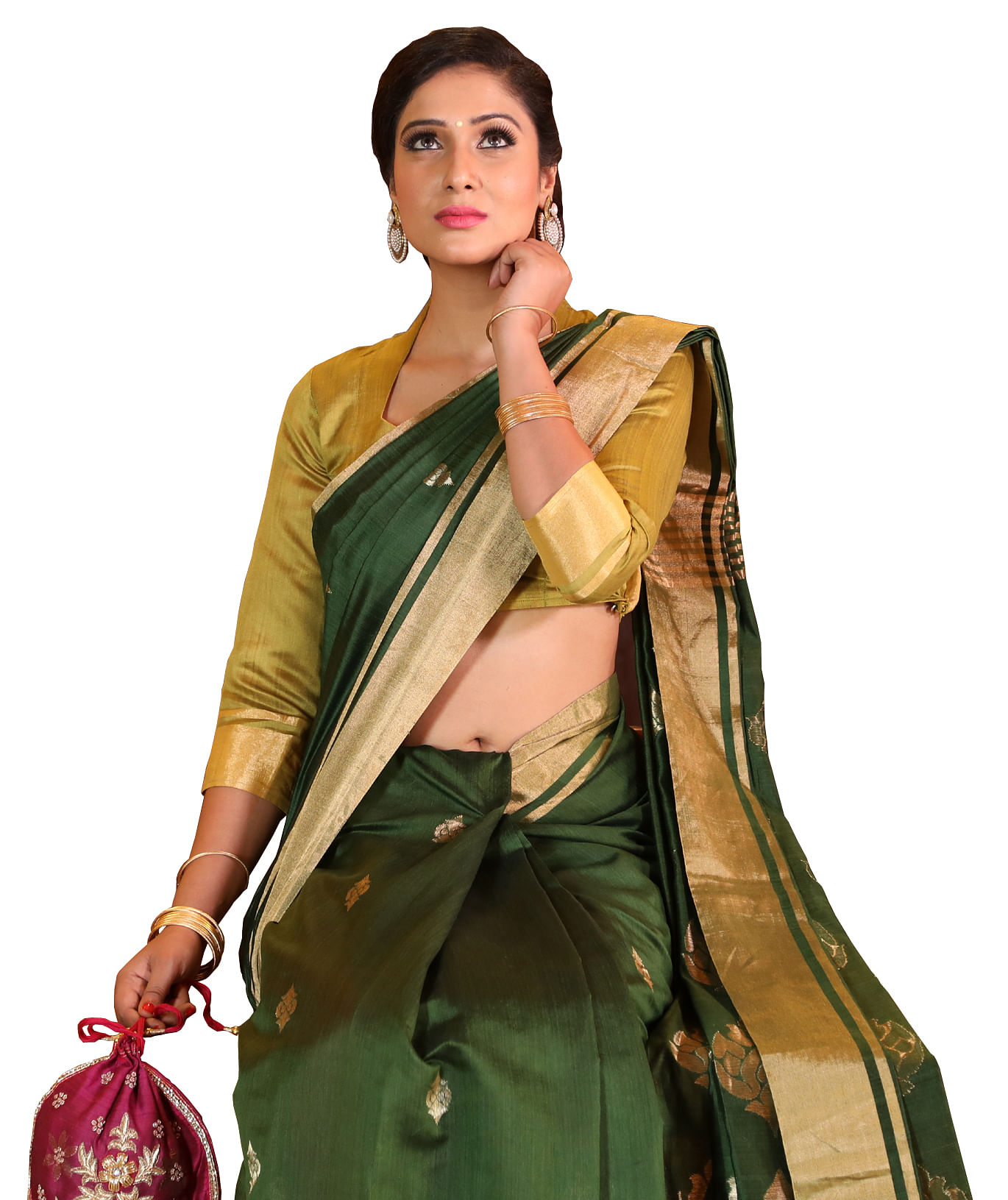
Chanderi, a tiny town located on a hill southwest of the Betwa river in Guna (Ashoknagar) district of Madhya Pradesh, is known for its legendary handwoven cotton, cotton-silk and silk saris. The saris are known for their sophisticated beauty, unique texture, pastel shades, intricate motifs, light weight, sheen, and semi-transparent qualities. Many references to this sari are found in Mahabharata.
Initially, a majority of Chanderi weavers belonged to the Muslim community. However, after 1350s, Koshti weavers from Jhansi migrated to this place, only to make Chanderi textiles world-famous.
The Moghul reign witnessed the golden period of this weaving. The finest weave lengths were produced. According to a legend, once, a length of a Chanderi weave — folded and packed in the hollow of a small bamboo — was presented to Emperor Akbar. When taken out and unfolded, the cloth left the emperor and others dumbstruck. It could even cover an elephant. This illustrates the intricacy and sophistication of Chanderi-weaving in those days.
Traditionally woven with pure, handspun cotton yarn, the saris were patronised by royalty.
Apart from the Moghuls, the Maharani of Baroda, Ahilyabai Holkar, also patronised this weaving. She had a fascination for Chanderi saris. She could choose the finest cotton and pick up the nuances of motif work just by rubbing the cloth on her cheek, and then pay accordingly. Because of the delicate texture and semi-transparency, the saris were called ‘woven air’.
Fine-quality Chanderi turbans were also popular. They were exclusively produced for the Maratha rulers. They were woven on a special six-inch loom. Today, probably, no weaver of this school is found in Chanderi.
Chanderi weaving has created India’s most elegant saris. Traditionally, they were woven using handspun cotton warp and weft. Spun as fine as 300 counts, it was famed as Dhaka muslin. However, industrial revolution shadowed the glory of these textiles.
The British imported cheaper, 120-to-200-count cotton from Manchester and eroded the market for Chanderi products. With no option left, Chanderi weavers shifted to silk by using it as warp. They preferred silk because the imported mill-spun cotton yarn could not produce the required shine, the specialty of the weaving.
Today, a genuine cotton-by-cotton Chanderi sari is hardly found in the market.
Chemical dyes were introduced to Chanderi only 50 years ago. Before this, Chanderi fabrics were coloured with dyes made of saffron and flowers that also imparted fragrance to the fabric. Soft pastel shades characterise most of the saris. They display a remarkably subtle balance between the colours used on the body and the borders. Today, Chanderi weavers also prefer fast-acting chemical dyes.Here, weaving is done on traditional looms — pit looms, dobby, and jacquard. Traditionally, most Chanderis have a vibrant gold border and two lines of gold zari on the pallu.
Their motifs are usually inspired by nature — swans, plants, fruits, flowers etc. Generally, two methods, Minakari(inlay in the motifs) and Addedar Patela (jewelled cutwork), embellish these saris. But what has surely survived since the 12th century is the magic of Chanderi-weaving.